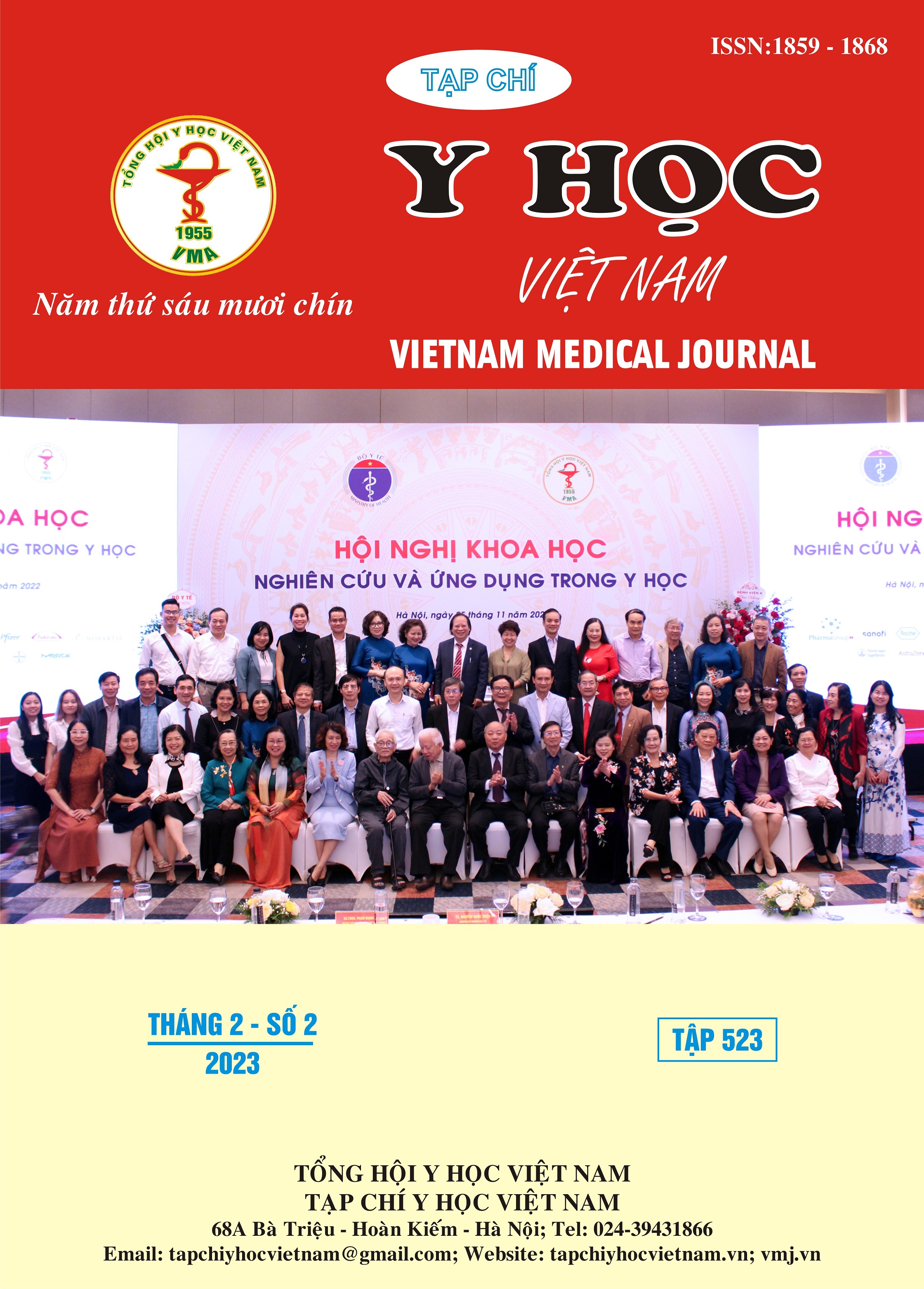CLINICAL AND SUBCLINICAL CHARACTERISTICS OF PATIENTS WITH RECURRENT OR METASTATIC IN TRIPLE NEGATIVE BREAST CANCER
Main Article Content
Abstract
Objectives: Clinical and subclinical characteristics of patients with recurrent and metastatic in triple negative breast cancer at K hospital. Patients and methods: Retrospective descriptive study of 95 patients were diagnosed recurrent or metastatic in triple negative breast cancer at K hospital. Results: 95 patients enrolled in the study. The mean age at the time of recurrent or metastatic was 47.3 years. The most common time for patients to relapse was the first 2 years after radical treatment, accounting for 64.7%. Mean disease-free survival was 18.9 months. The patients who relapsed at the time after 3 years only accounted for 17.1%. The most common sites of metastasis were lung, liver and bone accounting for 48.4%, 34.7% and 23.1%, respectively. 68.4% of patients had visceral metastases, in which 17.9% of patients had metastases from 2 organs or more. At the time of diagnosis, 52.6% of patients had elevated CA15-3 levels. Conclusion: Triple negative breast cancer has a very high rate of metastatic recurrence in the first years after radical treatment, especially in the first 3 years. Patients have a high rate of visceral metastasis while the rate of bone metastasis is lower than that of the others breast cancer subtypes.
Article Details
Keywords
Triple negative breast cancer, recurrent, metastatic
References
2. Kaya V, Yildirim M, Yazici G, Gunduz S, Bozcuk H, Paydas S. Effectiveness of Platinum-Based Treatment for Triple Negative Metastatic Breast Cancer: a Meta-Analysis. Asian Pac J Cancer Prev APJCP. 2018;19(5):1169-1173. doi:10.22034/APJCP.2018.19.5.1169
3. Dent R, Trudeau M, Pritchard KI, et al. Triple-Negative Breast Cancer: Clinical Features and Patterns of Recurrence. Clin Cancer Res. 2007;13(15):4429-4434. doi:10.1158/1078-0432.CCR-06-3045
4. Brouckaert O, Wildiers H, Floris G, Neven P. Update on triple-negative breast cancer: prognosis and management strategies. Int J Womens Health. 2012;4:511-520. doi:10.2147/ IJWH.S18541
5. Vũ Hữu Khiêm. Một Số Đặc Điểm Ung Thư vú Di Căn Sau Điều Trị. Tạp Chí Học Thực Hành. 2004;489:192-196.
6. Chen Y, Guan Y, Wang J, et al. Platinum-based chemotherapy in advanced triple-negative breast cancer: A multicenter real-world study in China. Int J Cancer. 2020;147(12):3490-3499. doi:10.1002/ijc.33175
7. Zhang J, Fan M, Xie J, et al. Chemotherapy of metastatic triple negative breast cancer: Experience of using platinum-based chemotherapy. Oncotarget. 2015;6(40):43135-43143.
8. Qiu J, Xue X, Hu C, et al. Comparison of Clinicopathological Features and Prognosis in Triple-Negative and Non-Triple Negative Breast Cancer. J Cancer. 2016;7(2):167-173. doi:10.7150/ jca.10944
9. Phạm Thị Thu Trang (2015), “Đánh Giá Kết Quả Điều Trị Hóa Chất Capecitabine Trong Ung Thư vú Tái Phát Di Căn”, Luận Án Thạc Sỹ y Học. Trường Đại Học Y Hà Nội, 64 - 65.
10. Nguyễn Việt Dũng (2017), “Đánh Giá Kết Quả Điều Trị Phẫu Thuật Kết Hợp Hóa Chất Trong Ung Thư vú Có Bộ Ba Thụ Thể ER, PR, Her-2 Âm Tính”, Luận Án Tiến Sỹ y Học. Trường Đại Học y Hà Nội.


